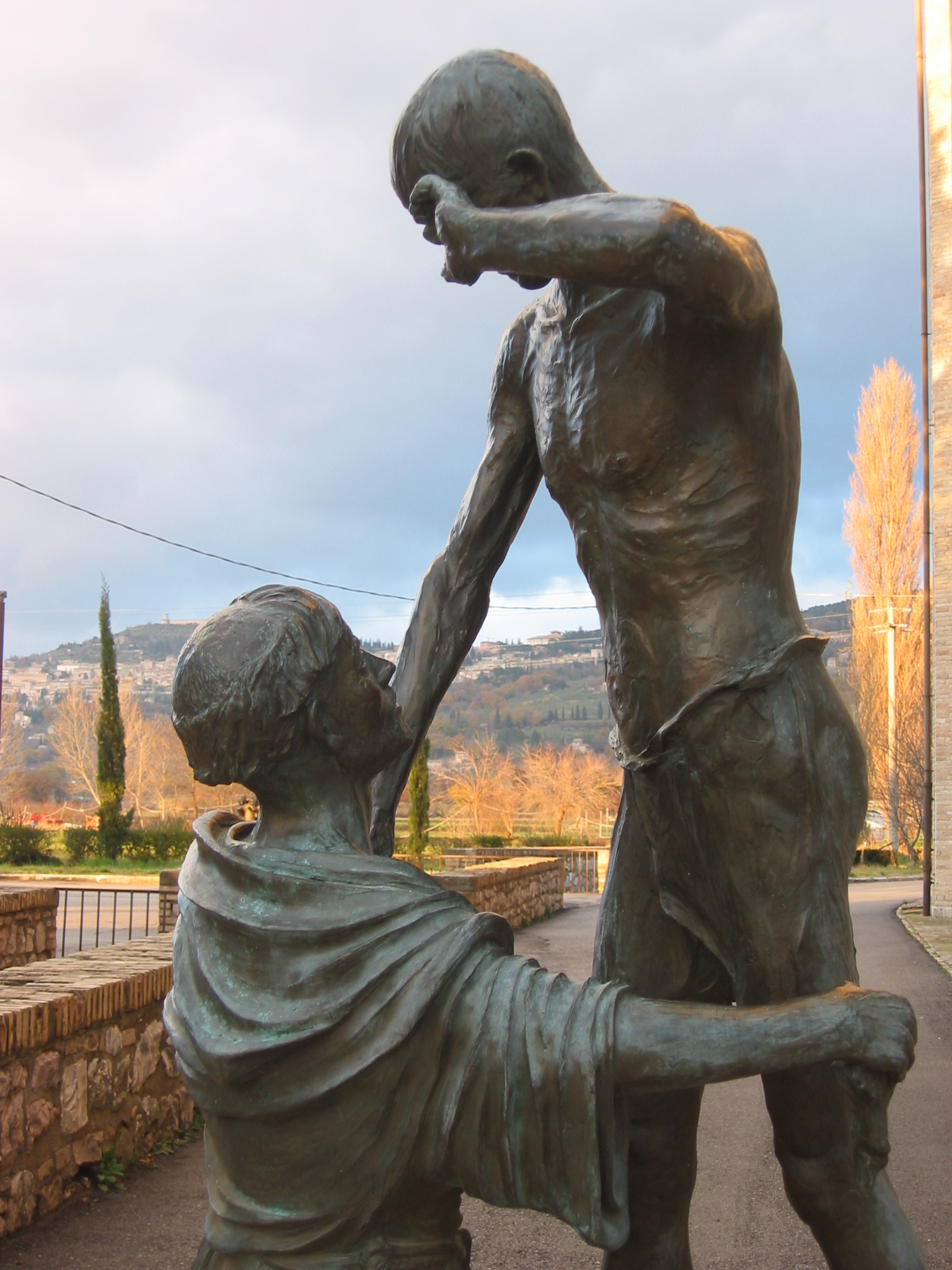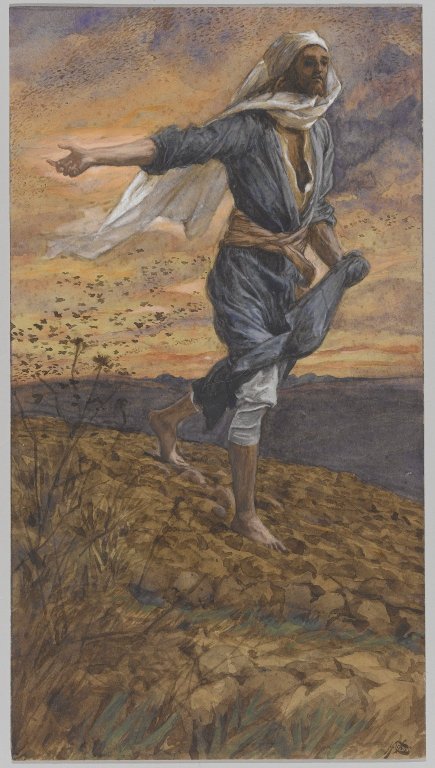
Returning from vacation by going northeast before going west.
St. Ignatius of Loyola learned to find fruit, that is, the effect or consequence of action. More important than our actions is the action of God in, with and for humans. One grows to find fruit and to offer it the more one savors one's own life and all creation. I hope my posts help you feel that finding fruit is a profitable way of living.

 Noted in The Daily Reporter, "Professor Gary Greenberg who has a PhD in biomedical research from University College London said: 'It is incredible to think when you are walking on the beach you are standing on these tiny treasures.""
Noted in The Daily Reporter, "Professor Gary Greenberg who has a PhD in biomedical research from University College London said: 'It is incredible to think when you are walking on the beach you are standing on these tiny treasures."" unemployed have become invisible.
unemployed have become invisible.The United States is in the grips of its gravest jobs crisis since Franklin D. Roosevelt was in the White House. . . .But unless you’re one of those unhappy 14 million, you might not even notice the problem.
Follow her "math, both economic and political."
__________________________________________________________
Wiki-image by Bkwillwm of job loss chart is used according to the Creative Commons Attribution-Share Alike 3.0 Unported license.
Astronauts and cosmonauts get named and supplies for them and their missions get mentioned,
But [according to the [Christian Science
Monitor] over the course of 30 years, the space shuttles have flown some peculiar objects into orbit. The list of odd stuff that flew aboard the shuttles is a long one, and includes the Olympic torch, a replica of the golden spike from the First Transcontinental Railroad, and rocks from the top of Mount Everest and the surface of the moon, just to name a few.
Here nine recent space oddities carried into orbit on NASA shuttles. . .
The list, by Denise Chow, SPACE.com Staff Writer, is reminder that some peculiar things making news can bring smiles.
___________________________________________________________
Wiki-image of light sabers is in the public domain.

15th Sunday of the Year A (10Jul2011)
Is 55. 10-11; Ps 65; Rm 8. 18-23; Mt 13. 1-23
Homily of Fr. Paul Panaretos, S.J.
Decision, Growth, Choice
Today’s gospel is begins a chapter in which Jesus used parables to teach his disciples—and us—about God’s power to transform and to renew people and all creation. It may help us to ponder our transformation better if we consider the question, What is a parable?
A parable is a brief, succinct story, in prose or verse, with a moral or religious lesson. It differs from a fable in which animals, plants, lifeless objects and forces of nature are actors—think of Aesop’s fables—while parables usually feature human actors. The actor in Jesus’ parable today is human, a sower of seed.
A parable is simple in design. With realism and familiarity, it sketches a setting—today, a plot of land; describes an action--someone scattering seed; and shows the results--some seed grew, some did not. A parable often involves a person facing a difficult moral choice. Jesus spoke in parables to direct attention to him and his way of living. Jesus always demands our choice.
 A contemporary theologian repeated an important point when I heard her several years ago: “Parables are stories about ordinary men and women who find in the midst of their everyday lives surprising things happening. [Parables] are not about ‘giants of the faith’ who have religious visions.”1 Indeed! Parables are about people like us, people choosing Jesus repeatedly and entrusting their lives to his gracious power, power we can’t explain.
A contemporary theologian repeated an important point when I heard her several years ago: “Parables are stories about ordinary men and women who find in the midst of their everyday lives surprising things happening. [Parables] are not about ‘giants of the faith’ who have religious visions.”1 Indeed! Parables are about people like us, people choosing Jesus repeatedly and entrusting their lives to his gracious power, power we can’t explain.
Immediately before the verses we heard as our first reading, Isaiah, long before Jesus, had announced again for God that God’s ways are not human’s ways.2 We heard Isaiah offer a clue to the mysterious nature of divine power. Working in patterns unseen and without our scientific understanding, like the pattern of rain-evaporation-condensation-rain, God’s word gives us life and saves us, achieving the end for which I sent it. Life is God’s goal, the pattern of divine working.
When it comes to the way God achieves God’s goal of real life, I feel the helpful proverb, “God writes with crooked lines,” limps. Surely God writes upside down and even backward!
The dying and rising of Jesus, which is the source of real life and offers real life to us at each moment, shocks us when we’re honest. Jesus prepared us by teaching in parables to accept him, our crucified Messiah, as the parable of God and God’s life. Those who have ears, let them hear is not about human acoustics only; Jesus’ words closing his parable invite us to accept Jesus with and by our lives.
This parable of Jesus by which he began teaching his disciples teaches us with its elements of decision, growth and choice.
Our lives, in the parable’s language, are soil. Alone we may be unable to change it from hard and shallow. Jesus graces us to make our lives deep, rich soil. Keeping hearts and minds focused on Jesus, allows us to make the calculated risks of responding in faith with our fragile lives, which God in Jesus transforms by the power of their Holy Spirit.
To become more aware of God in Jesus transforming you by the power of their Holy Spirit, take 15 minutes daily with Jesus this week.
Link to this homily's spiritual exercise
__________________
__________________________________________________________
Wiki-image of the Sower is in the public domain.
 Christian Science Monitor has been following both in that order. A recent post considered the new nation's oil reserves. The posting links to its earlier one about internal strife and the new nation's ability to limit it.
Christian Science Monitor has been following both in that order. A recent post considered the new nation's oil reserves. The posting links to its earlier one about internal strife and the new nation's ability to limit it.Lectio Divina and Gospel Contemplation are two ways to pray with Scripture. [Jesuit] Fr. Leonhardt explains these two forms of prayer for those new to the practices.Even with familiarity of either or both methods, Fr. Leonhardt offers clear and helpful advice to enrich the prayer of veterans as well as beginners.
 catching hook, as usual, Mr. Allen began his posting today
catching hook, as usual, Mr. Allen began his posting todayThere’s much to be learned from detective stories, including that the solution to any mystery usually lies in finding the right question to ask. At the moment, a gripping Vatican mystery centers on the Congregation for Religious, and here’s a nominee for the right question: Is Ronald Reagan or Sigmund Freud the better template for Benedict XVI’s management style?Obviously, a bit of background is in order.
Read his All Things Catholic posting to be demystified.
___________________________________________________
Wiki-image by David Webb of Sigmund Freud is used according to the Creative Commons Attribution 2.0 Generic license.
Without denying that there are problems [among religious orders], Bráz said, his main aim is to “rebuild trust” by approaching issues in a new way – “without preemptive condemnations,” he said, “and by listening to people’s concerns.”Mr. John L. Allen posted his remarks yesterday at NCR Today. Mr. Allen also recalled
that As a young priest, Bráz was once on his way to a village to say Mass when he stumbled upon an armored car robbery. He was shot during the crossfire, with bullets perforating his lungs and intestines and one eye. Although he survived and surgeons were able to save his eye, he still carries fragments of those bullets in his body.Other points from his biography related by Mr. Allen suggest a listener with ears and heart.
 Computer chips make possible new colors, new effects and new enjoyment. Where are those chips?
Computer chips make possible new colors, new effects and new enjoyment. Where are those chips?"Each and every one of our shells now has its own computer chip," says Philip Butler, producer and "chief operating brother-in-law" for Fireworks by Grucci in Brookhaven, N.Y._________________________________________________________